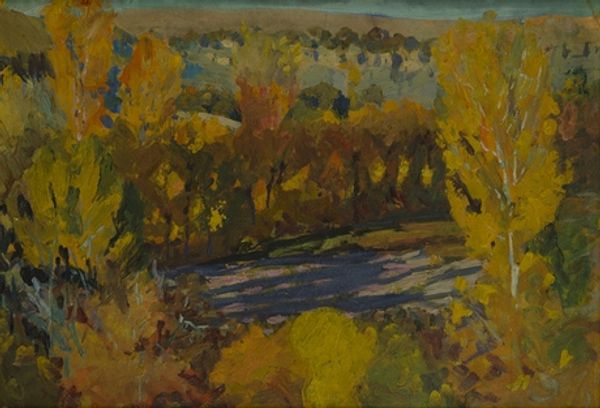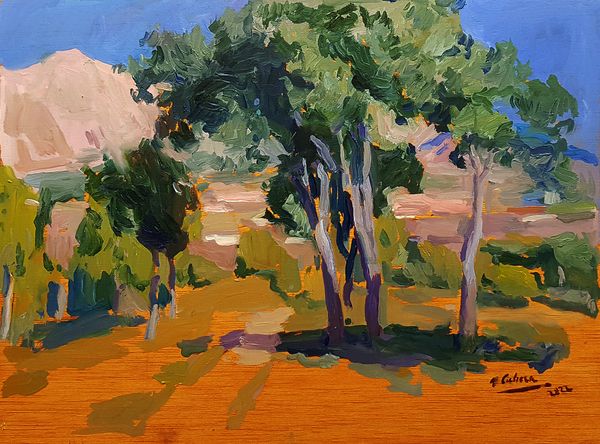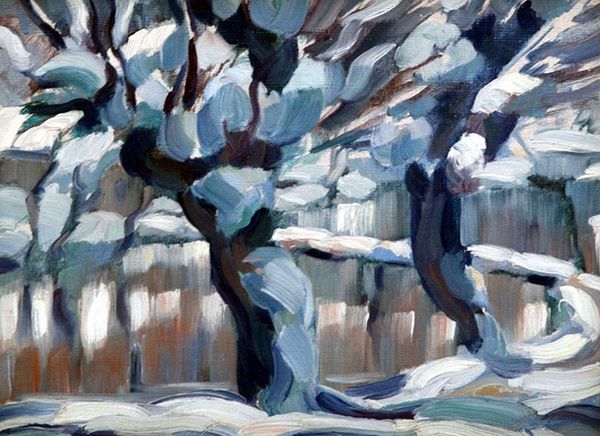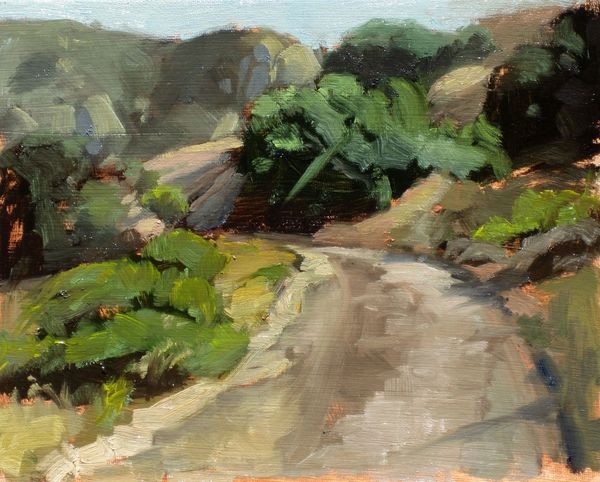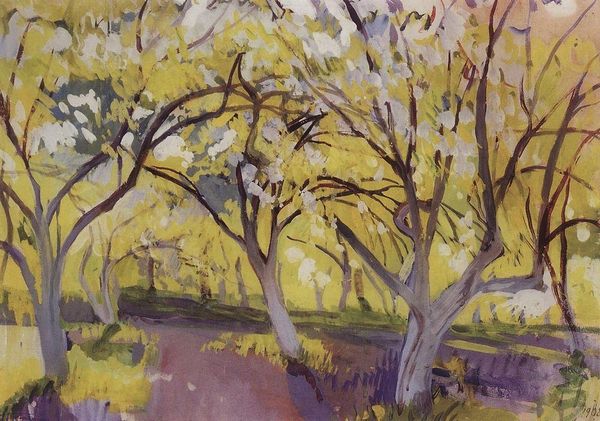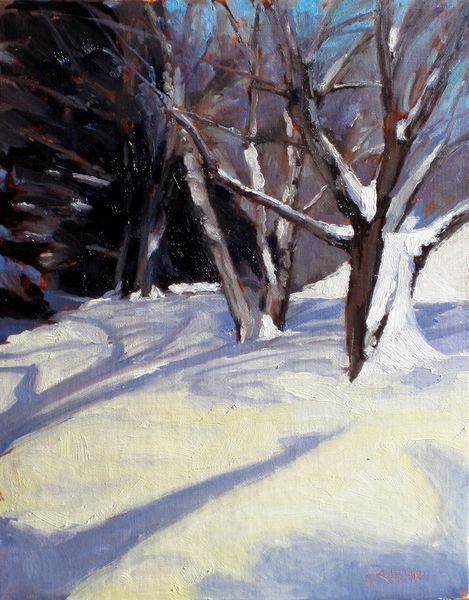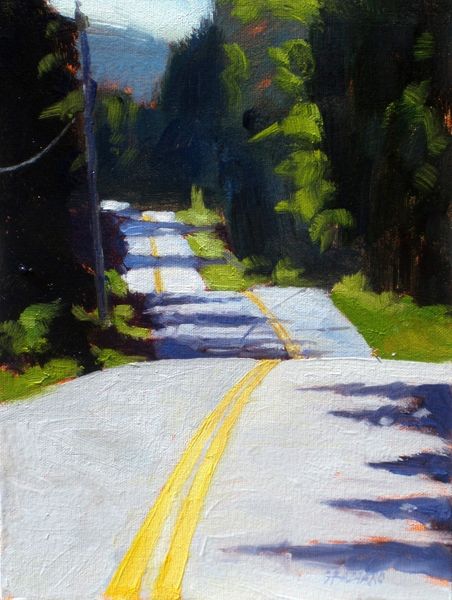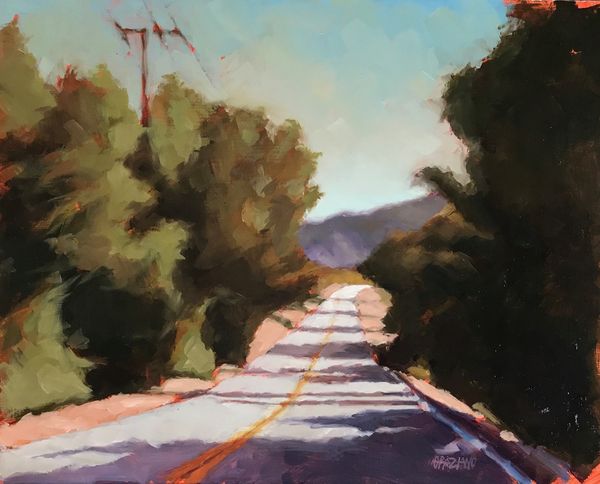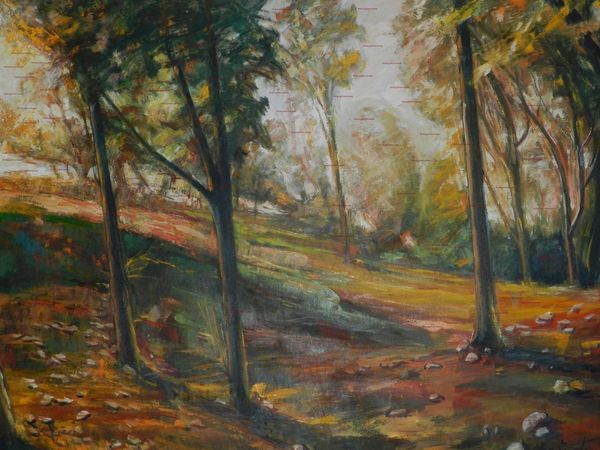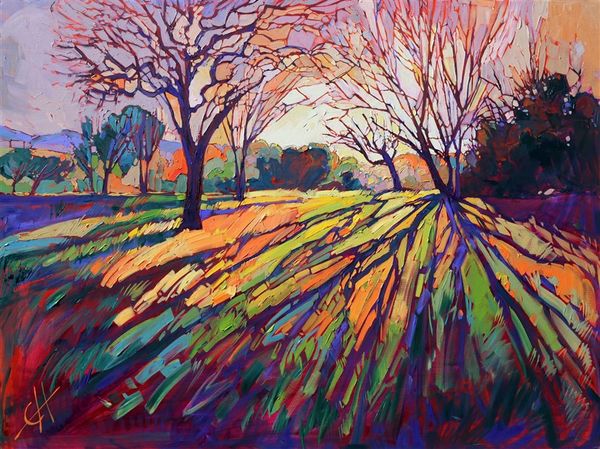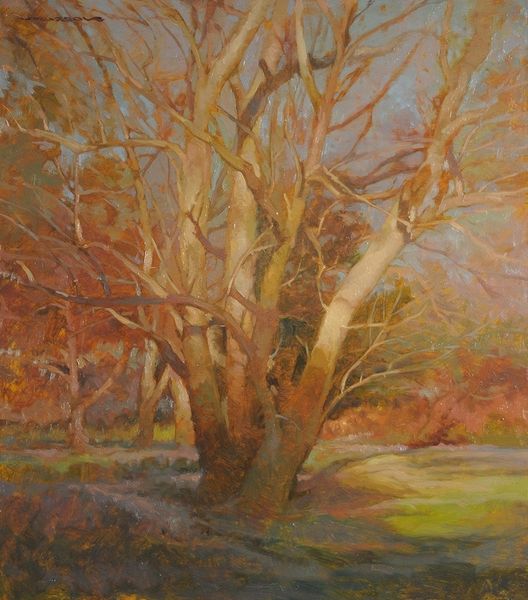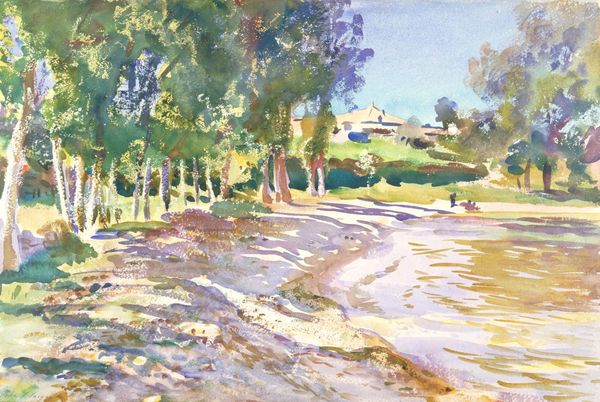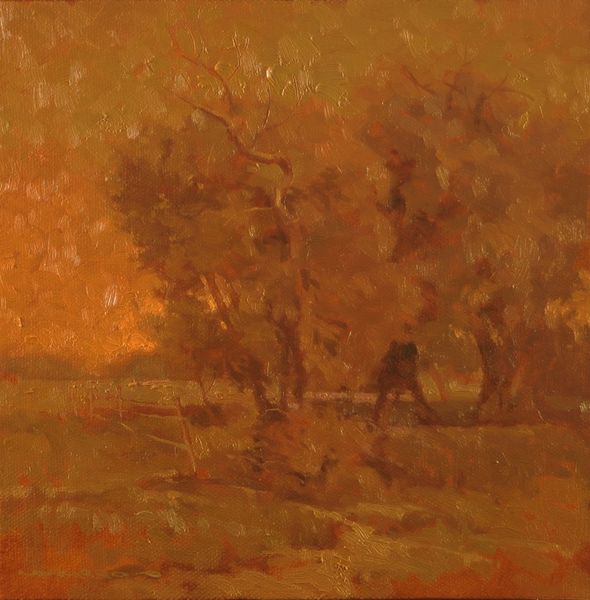
painting, plein-air, oil-paint, impasto
#
painting
#
plein-air
#
oil-paint
#
landscape
#
impressionist landscape
#
oil painting
#
impasto
#
modernism
#
realism
Copyright: Modern Artists: Artvee
Curator: Welcome! Let’s discuss “Bend In The Road” by Dan Graziano. While its creation date remains unspecified, this landscape piece exemplifies plein-air painting, capturing the essence of a scene in natural, open air. Editor: It’s got a certain immediacy. The dappled light across the road, the contrast between the sun-drenched path and the shadowed trees—it all suggests a fleeting moment. There’s something almost unsettling in the way the road disappears around that bend. Curator: Considering landscape painting within the socio-political landscape, the painting resonates with themes of journeys. Where the bend of the road presents an uncertainty of an experience whether by choice, force, or serendipity. Editor: You're right, it feels almost filmic. What intrigues me is how the brushstrokes become almost abstract when viewed up close. This interplay between realism and something bordering on abstraction—I wonder if the artist thought about capturing a pure moment. Curator: I think context really allows for multiple readings of the image, thinking about whose road this might be. As a work in oil, does it portray an idealized escape into nature? Is it an experience only privileged people would enjoy or even notice? Editor: And that's something I can relate to. There's a strange nostalgia here, the thick impasto reflecting light almost as a memory, even as an imagined place rather than something actually lived or found. I mean, the light itself practically dances. Curator: Indeed, considering its potential historical contexts, what societal shifts or environmental factors might have influenced such subject matters? It’s a commentary of land, ownership, and perspective on a journey. Editor: Puts a different spin on things, definitely adding new emotional and narrative layers into an experience like that captured by Graziano’s image. Curator: Yes, absolutely. Analyzing art involves decoding not only the immediate visual message but also the potential layered contexts of power structures embedded within and surrounding its creation. Editor: Food for thought, I’d say. It really invites us to contemplate the complexities hidden beneath that serene surface.
Comments
No comments
Be the first to comment and join the conversation on the ultimate creative platform.
